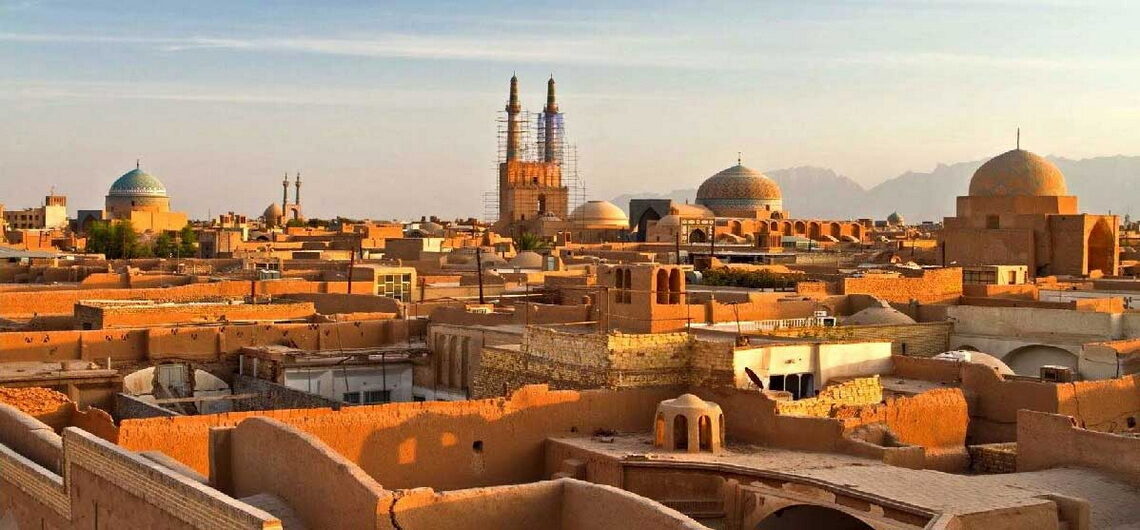
Yazd
The historical and ancient Yazd is renowned for its unique and ingenious architectures and houses. Due to the harsh summers and the intolerable weather during this season, people have applied methods and innovations by which they can minimize the severity and enlist methods to keep the weather in the city and houses pleasant. That is why there are well-known universal architecture seminars and courses held in Yazd. There are so many Persian architectural elements used in the city that are a suited indicator of their ingenuity and creativity in architecture. Qanat (underground water networks) Badgir (wind tower), Gowdal Baghche (a Persian characteristic of yards), Sabat, Gozar, and Abanbar (water storage) are some of the architectural characteristics implemented in Yazd. The attractive Yazdi dialect is another representative of Yazd’s uniqueness and originality which is conserved. There are so many original Persian words only preserved through this dialect.
Destinations
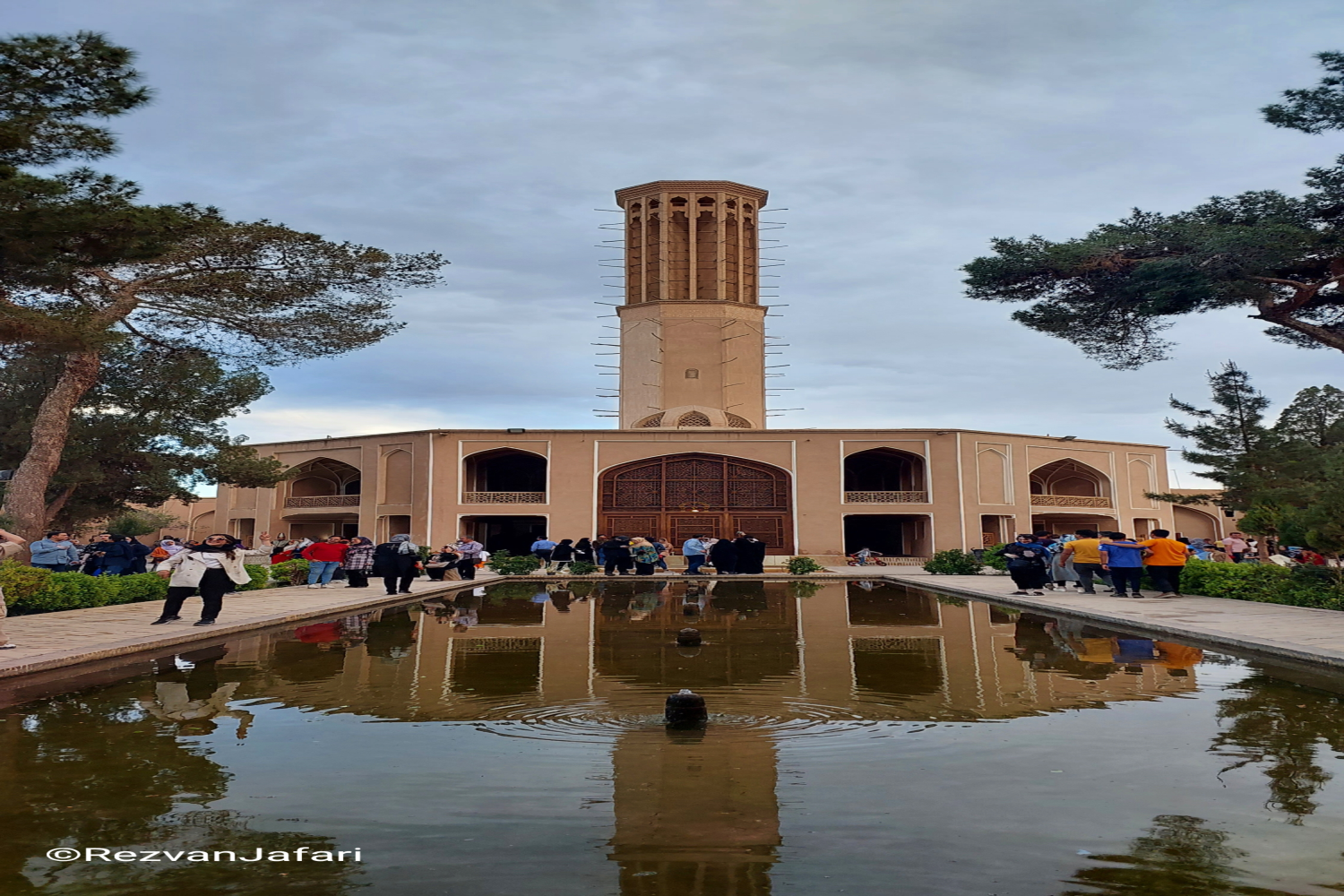
Dolat Abad Garden
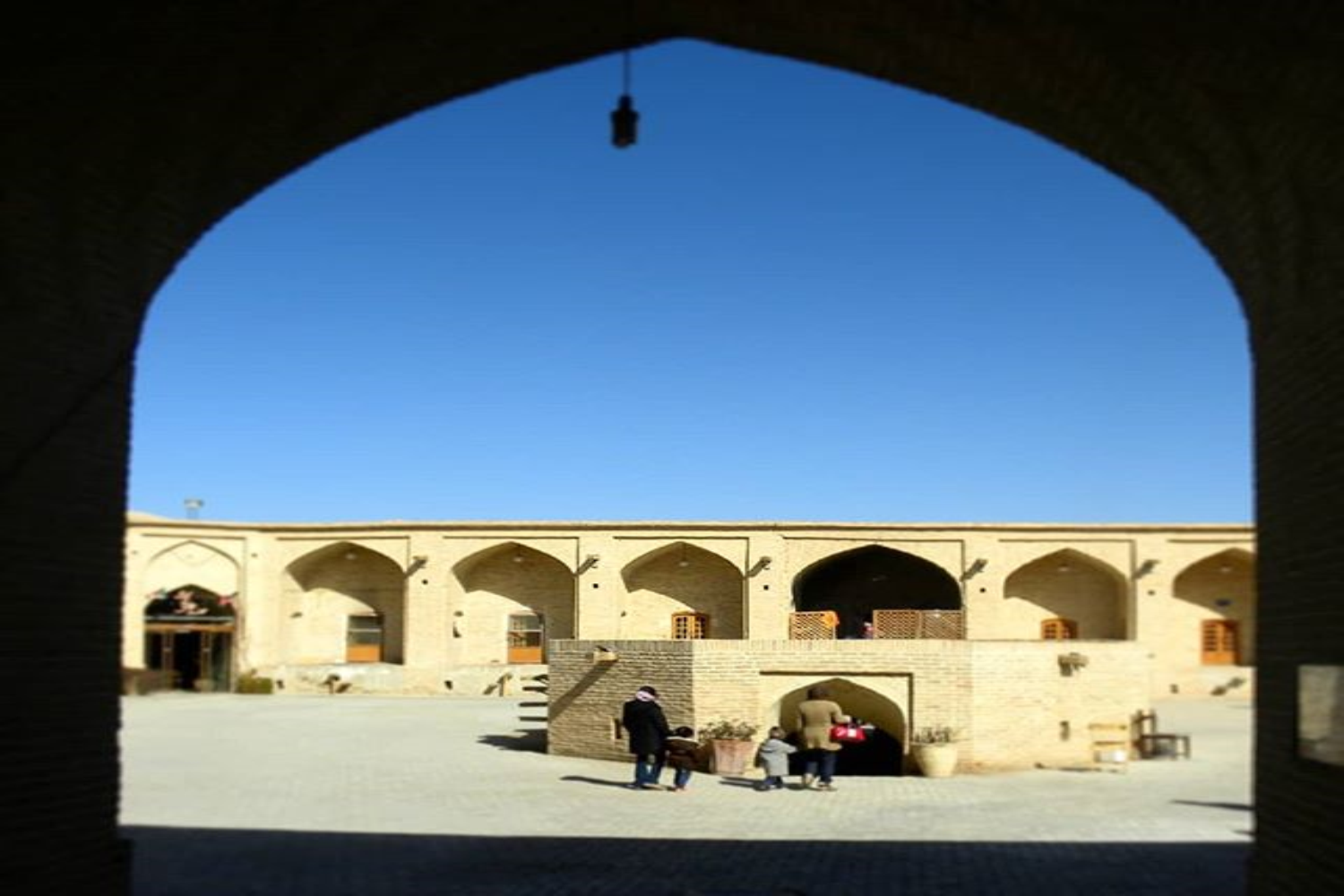
Caravansaray of Meybod
Meybod Caravanserai or popular as Shah Abbasi Caravanserai Meybod, built in 1689, sits in the city of Meybod, 56 km northwest of Yazd City. Properly preserved, Meybod Caravanserai is one of the numerous caravanserais of Iran, constructed in Safavid era (1501-1726). It is neighbored by Kolar Water Reservoir (Ab Anbar) on its entrance, an Icehouse (Yakhchal) on its opposite, and a Pony Express (Chapar-Khaneh) on its side.

Pottery Workshop
Zoroastrian Tower of Silence
Within the arid landscapes of Yazd, Iran, stands a testament to ancient beliefs and cultural practices, which is called the Tower of Silence. Also known as Dakhma or Dokhma, this enigmatic structure is a revered site for followers of the Zoroastrian faith, offering a glimpse into a unique funerary tradition that dates back centuries. Yazd Tower of Silence, with its intricate history and cultural significance, serves as a bridge connecting the past to the present, allowing us to explore the rich tapestry of religious practices that have shaped the region’s identity.
Zoroastrian Fire Temple
The Fire Temple of Yazd, a focus of the Zoroastrian faith in the city, is one of the most important fire temples in the world. Within an elegant Neoclassical building, reflected in an oval pool in the forecourt, is the temple's centrepiece - the Behram Fire. The Behram Fire has burned continuously since 470 AD and is the longest burning sacred flame in Iran. It has been relocated several times - coming to Yazd in 1474 and only being moved to this building in 1940. The fire temple here is one of the nine most important in the world to Zoroastrians, and one of only 167 that still exist anywhere.
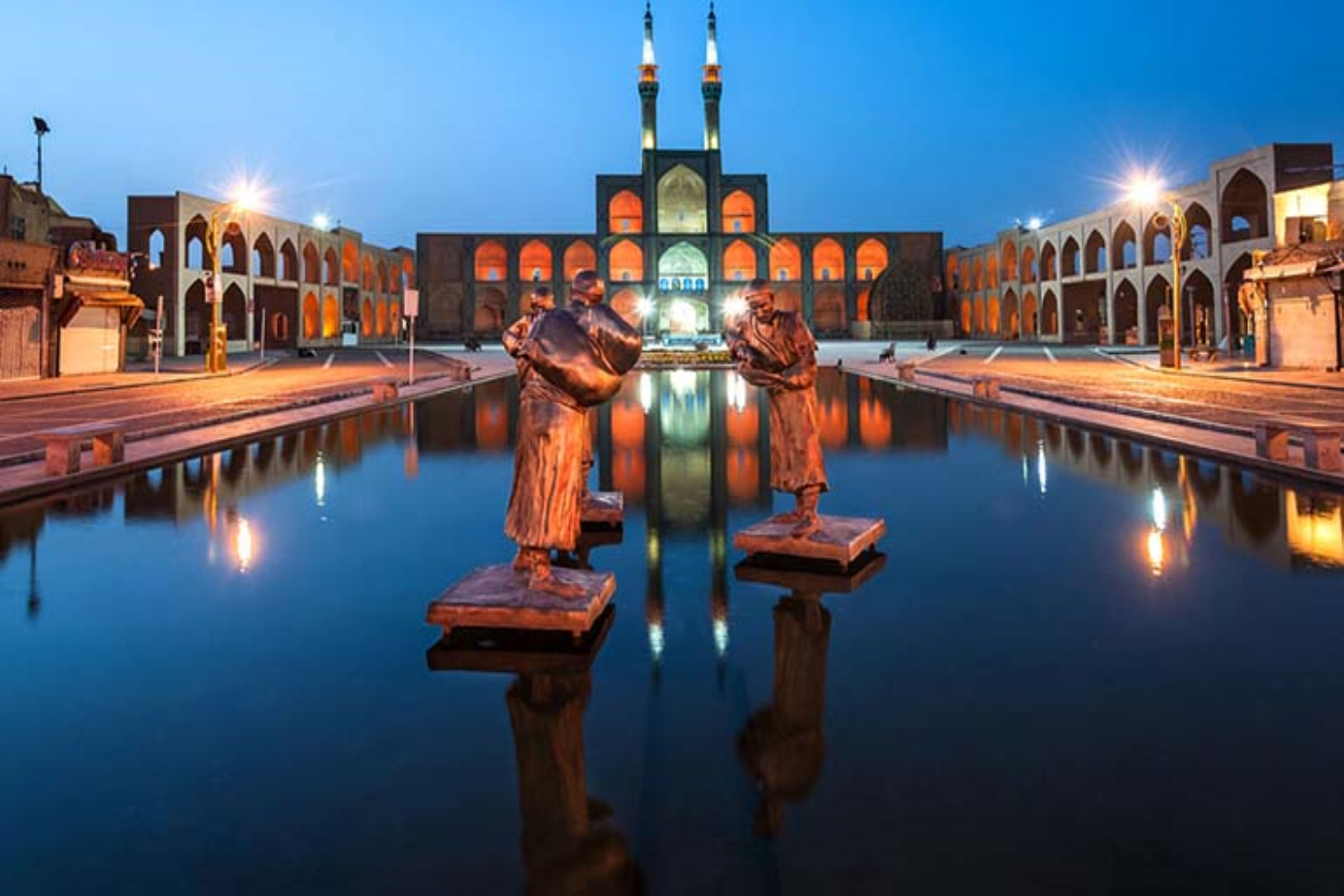
Amir Chakhmagh square
Amir Chakhmaq Square was constructed in Timurid era by Amir Jalal Addin Chakhmaq. He was a Timurid ruler of Yazd and completing the project was not possible without his wife’s – Seti Fatemeh Khatoon – help and advice. The square and the mosque were then called Amir Chakhmaq Square and Amir Chakhmaq Mosque by the people respectively.
Different parts were added to the complex after him during various eras, however, they all were too trivial in comparison with the original version. Moreover, renovations and reconstructions were made within different periods as well.
Narin Castle of Meybod
The building which is known as Narenj Castle in common language is one of the most important historical monuments before Islam in Yazd Province. Narin Ghal’eh in Meybod town in Yazd is another historical and stunning mansion in ancient Iran whose builders’ architecture and art has attracted the attention and admiration of archaeologists and history lovers. Its long background has given it a legendary identity such that the compiler of Yazd History has attributed the castle to the time of Solomon (AS). This old castle which is on top of a hill in front of Meybod has all its parts made of adobe and mud and its architecture is in stratified form. The castle was built in about 5 stages.
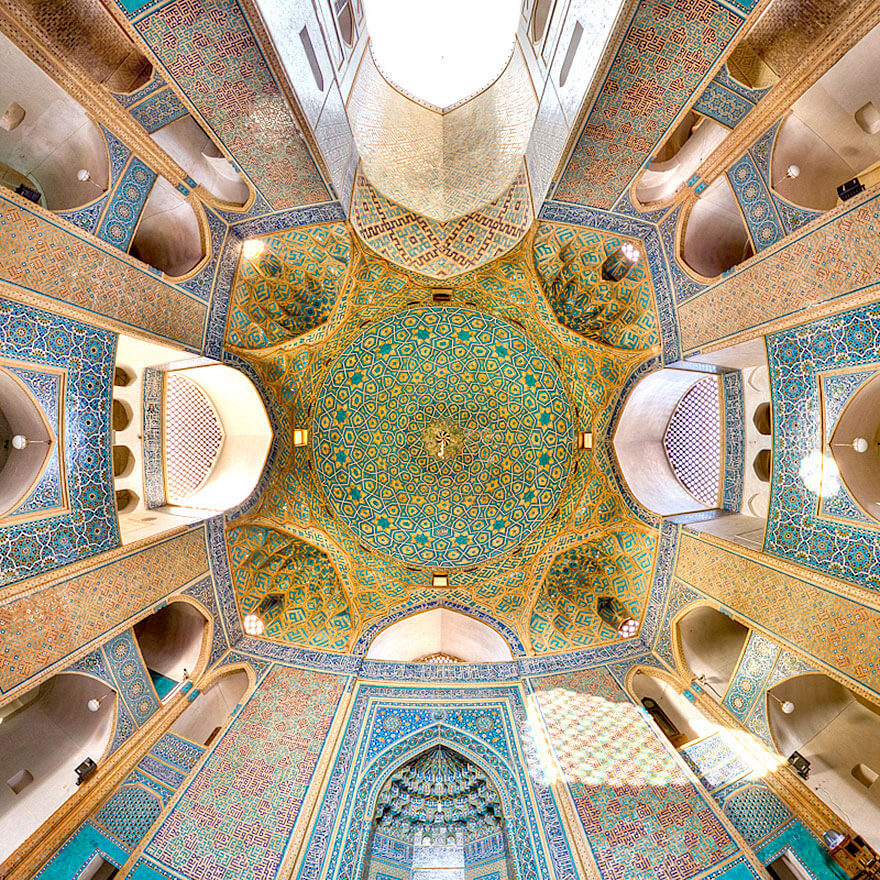
Grand Mosque
The origin of the Jameh Mosque of Yazd dates back to 800 years ago. First, the mosque was constructed on the site of a Sassanid fire temple by the command of A’la Al – Dowleh Kalanjar. After 200 years, the mosque was renovated. The main building of the present construction is built by the order of Seyyed Rokhn Al Din Mohammad Qazi. One of the highlights about this mosque is that the oldest dated tile work existing in the building is in the eastern entrance vestibule and dates back to 1364 A.D.
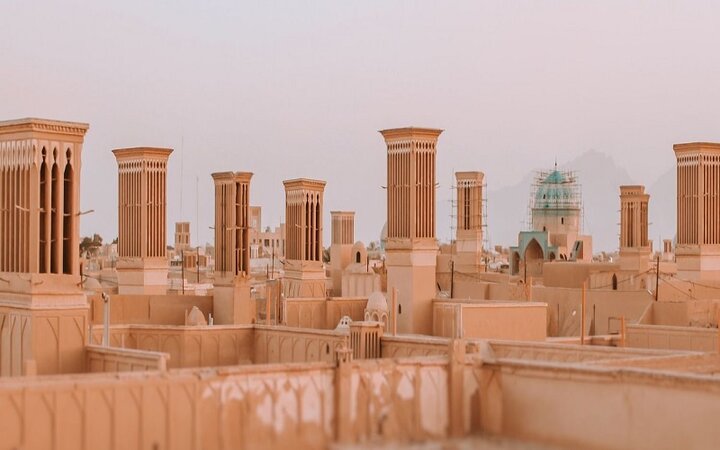
Wind towers and Old city of Yazd